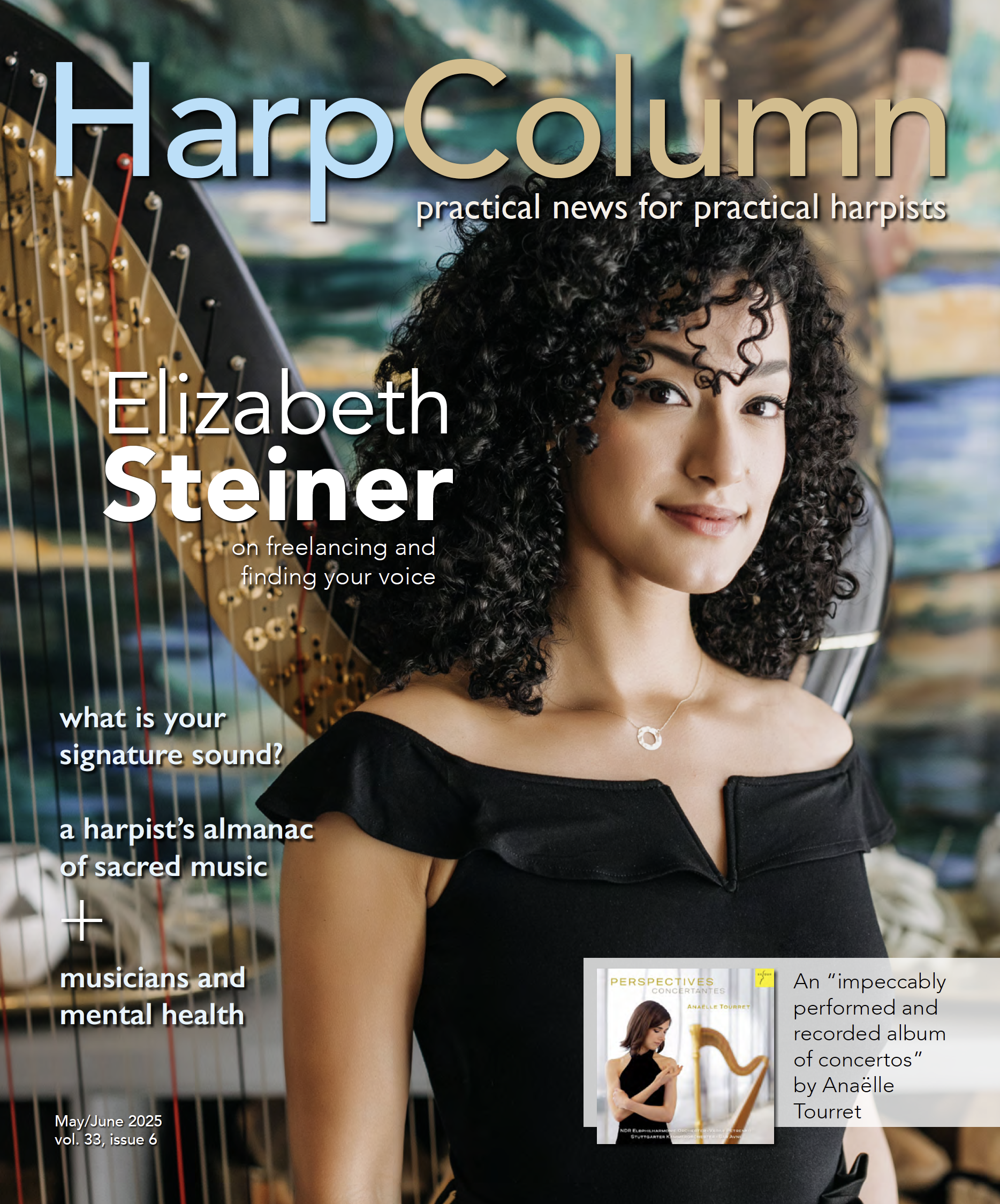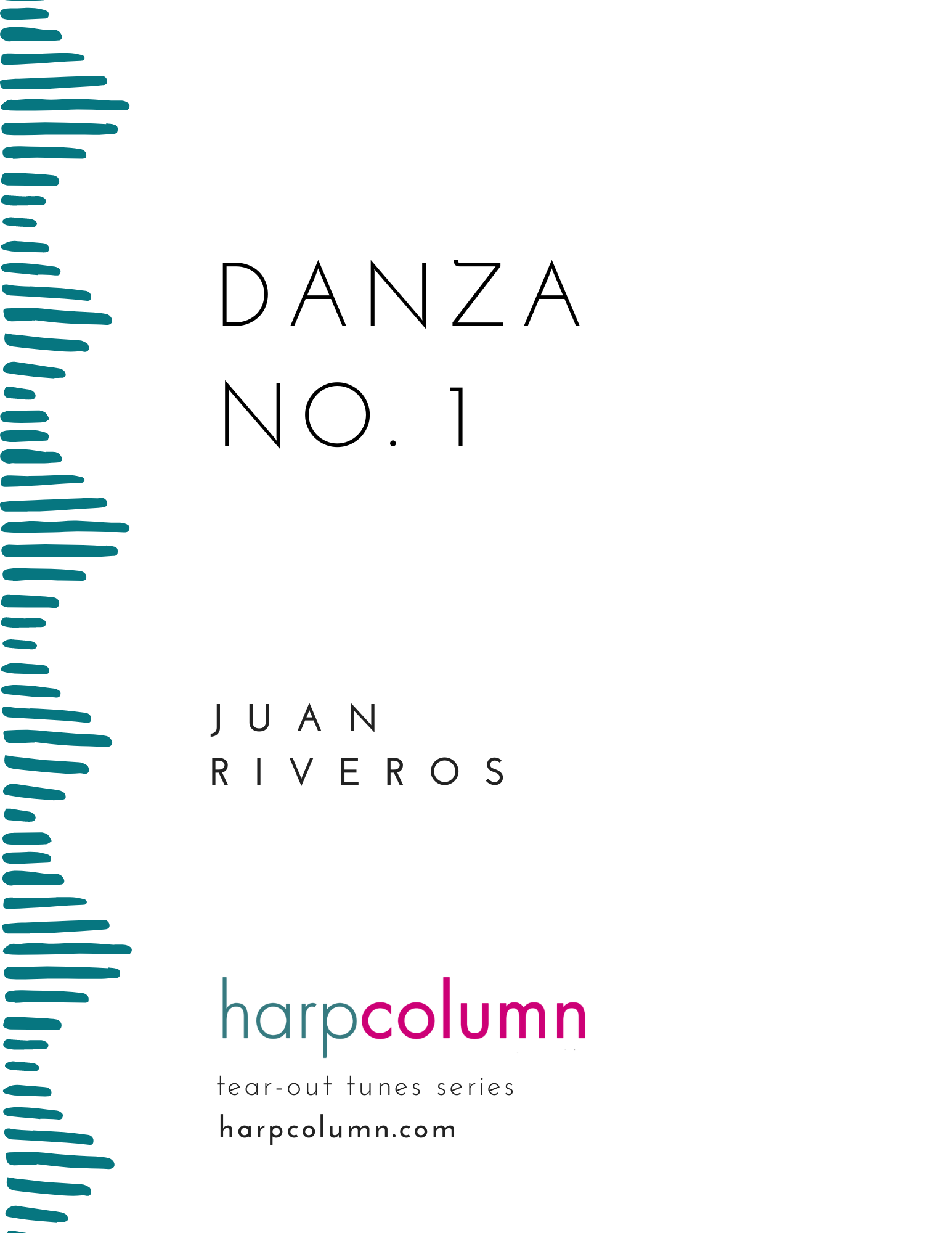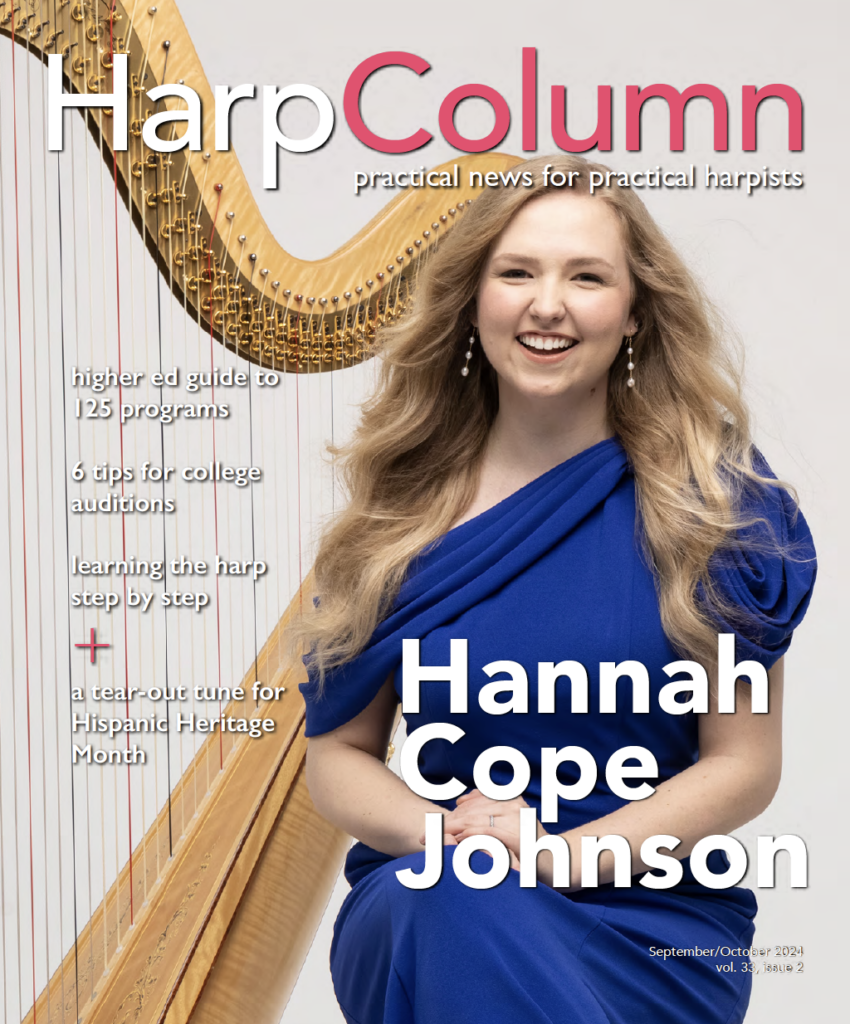
Download this issue to get this tune now!
Each installment of our Tear-Out Tunes series features a new piece written by one of the best harpist-composer-arrangers in the business. Each composer will tell you a little bit about their piece, and also give you some helpful tips for learning it and getting the most out of the experience. The new piece is yours to keep. We even put it right in the middle of the magazine so you can tear out the whole sheet and put your new tune on your music stand.
What happens when we write music? As composers, we notate and arrange pitches and rhythms to reflect our desired patterns, often treating the score as our template or map for music making. But how do we know which pitches or rhythms to notate and organize together, and what influences those decisions? I believe that musical environments, training, and our instrumental lens inform the compositional process of each piece. I found myself returning to all three of these places as I wrote Danza No. 1.
The habanera rhythm originated in Spain as the tresillo. Following its import to the New World with the Spanish conquistadors, the rhythm evolved into various dance forms across Latin America, including the Argentine tango.
Musicians often engage with various influences and traditions on a daily basis. For example, if you were to look at all the music on your stand right now, would every piece operate in a similar manner or include the same patterns? There are often more differences than similarities, yet there are also musical traditions that seemingly dictate all our decisions in performance. This cultural influence informs how we play pieces from different genres (e.g. popular vs. classical repertoire) and is equally manifested in each piece and its compositional process. So what happens when we write music? The organized pitches and rhythms unite and present a nexus of expression, blending numerous influences from a given composer and their own musical realm into a new piece. Each work simultaneously constructs and represents the identity of a composer, through their unique lens.
Latin American traditions and repertoire inspired and influenced Danza No. 1. As a performer, I embrace these rich traditions and love engaging with their nuanced modes of expression. As a composer, I couldn’t imagine writing a piece that didn’t reflect my identity and cultural background. In this piece, I integrated dance rhythms, which signals musical embodiment through movement and dance, a culturally significant aspect of music-making in Latinx cultures. The left hand generally operates within an ostinato (repeating rhythmic pattern), maintaining a continuous pulse and establishing harmonic roots, while the right hand explores different melodic musings. The left hand’s cyclical habanera rhythm (see sidebar) establishes a consistent rhythmic pattern that the right hand interacts with and even reacts to. Syncopation is often considered another distinctive feature of Latin American music, and a consistent ostinato can create opportunities to play off of a beat. In Danza No. 1, I incorporated syncopation throughout the melody, especially articulating a note on the “and” of beat four (offbeat) and sustaining the note into the next bar, as the left hand’s ostinato continues to drive the piece forward. I recommend thinking about the left hand as the rhythmic foundation, and playing the right hand almost as if it is reacting to strong beats.
In measure 19, the left hand takes over the melodic line, while the right hand provides rhythmic and harmonic support through a tango rhythm. The goal of this section is to allow the left hand to shine as the leader, so don’t be afraid to play the right hand softly and let the left hand sing through the harp’s lower registers. I recommend playing measures 21, 22, and 25 with an open hand in the left hand, as a way of clarifying the harmonic shifts between bars. In taking advantage of the harp as an instrument capable of presenting different voices and layers of texture, I decided to add some figures in the second octave to brighten and open the sound when the opening melody returns in measure 29. The last line should gradually fade, with a subito mf arrival on the final bar closing the dance.
I’m honored and thrilled to share a piece that unites my voice with musical processes I’ve long admired and appreciated as a Latinx harpist, and hope that this piece and article offer food for thought when considering the content and trajectory of every composition you encounter.•








